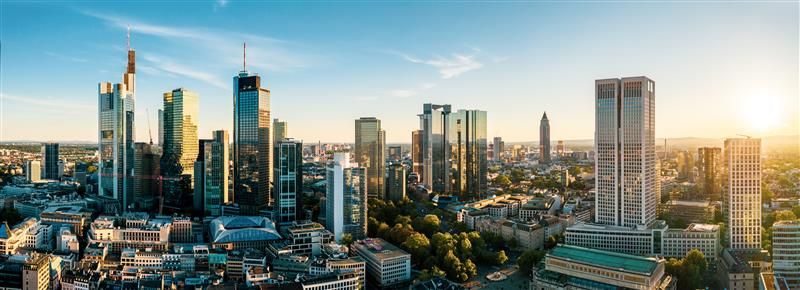What to expect at COP29 – Resilient and Healthy Cities
With over 32,000 participants registered, discussions in Baku will address the critical role of urban areas and the built environment in climate change mitigation and adaptation. The COP29 Declaration on Multisectoral Actions Pathways (MAP) for Resilient and Healthy Cities calls on Parties and stakeholders to enhance multisectoral cooperation to tackle climate challenges faced by cities.

The Built Environment challenge
Buildings represent more than a third of global final energy consumption - the total energy consumed by end users, such as households, industry and agriculture - and energy related emissions. According to the Breakthrough Agenda Report 2024, building emissions have grown at an average of 0.7% per year since 2015, and improvements in efficiency will likely be outpaced by global growth in floor area, with 68% of the world ‘s population projected to live in urban areas by 2050.
Additionally, the cement sector, a fundamental element of the built environment’s supply chain, is not on track to meet net zero by 2050, with no substantive decline in global emissions over the past decade.
More broadly, urban areas are responsible for 80% of global GDP and 70% of global carbon emissions. At the same time, climate change adversely impacts urban areas’ provision of basic services, infrastructure, housing, human livelihoods and health, with urban heat islands occurring due to artificial infrastructure and human activities.
As such, strong action on the built environment is key to driving the global transition needed to achieve the 1.5°C limit targeted by the Paris Agreement and enabling governments to meet their climate targets.
Pathway to COP29
With just under three weeks to go, over 32,000 people have now registered to participate at COP29. Last week, the final text of the Declarations and Pledges was published by the COP29 Presidency as part of its Action Agenda for the upcoming summit in Baku. The significance of the annual climate summit in shaping international climate policy is growing as we enter 2025, marking five years to go until 2030, a key milestone in the timeline for global climate goals.
The COP29 Declaration on Multisectoral Actions Pathways (MAP) for Resilient and Healthy Cities aims to strengthen cooperation, create coherence in all urban climate efforts and catalyse urban climate finance.
The Declaration calls on national and local governments, and other stakeholders, including international organisations, financial institutions, philanthropies, private sector entities, academia, and civil society organisations to utilise planning, policy, science, finance and collaboration to support sustainable urban development. This includes promoting health equity and nature-positive urban development, strengthening urban climate resilience and reducing pollution and GHG emissions in cities from technologies, buildings and construction and transport.
Including robust targets on the built environment in updated Nationally Determined Contributions (NDCs 3.0), due in February 2025, will be important in channeling investment and efforts into urban decarbonisation.
Last week, the World Green Building Council (WorldGBC) announced its new initiative, NDC Scorecard for Sustainable Buildings. The tool will allow all policymakers, GBCs and others to assess and compare their countries’ NDCs and reveal where further action is necessary on the built environment to increase the ambition and effectiveness of their NDCs and national policies, to ensure they are putting the sector on a trajectory for 1.5ºC. The tool will also enable stakeholders to conduct a gap analysis to ensure that NDCs, national policies and implementation are all aligned so that commitments are being put into practice.
It uses a number of criteria, such as carbon, resilience and adaptation, circularity, water, biodiversity, health, equity and access, and finance mechanisms, and establishes if the NDC is supported by national policies and building codes to ensure implementation.
Climate Action at COP29
The Climate Action Innovation Zone, taking place 13-15 November in Baku, will promote urban decarbonisation, exploring development and advancement of net-zero pathways for cities and regions, focusing on transforming transport, buildings, and energy systems.
Within the Innovation Zone, the Sustainable Innovation Forum’s panel discussion on ‘Transition Plans: Establishing best practice for future fit business and Building Tomorrow: Sustainable smart cities’ will explore how cities and regions are working with their transport sectors to empower rapid take up of newer, healthier and faster technologies and collaborating across the hard-to-abate industries that make up the built environment – steel, cement, energy, shipping – to develop financeable solutions.
At the Hydrogen Transition Summit, Irina Gorbounova, Vice President M&A and Head of XCarb Innovation Fund at Arcelormittal; Markus Müller, Chief Investment Officer ESG at Deutsche Bank AG; and Thomas Koch Blank, Managing Director at RMI, will engage in a conversation on the innovative pathways for using hydrogen as a vehicle to decarbonise hard-to-abate industries. Moderated by Executive Director of GTI Energy, Zane McDonald, the panel will also look at attracting investments to green hydrogen through intelligent offtake agreements.
These discussions promise to offer valuable insights into the collaborative efforts and innovative strategies required to drive sustainable progress across key industries, paving the way for greener, healthier and resilient cities.
For further information on the agenda and how to participate in the Sustainable Innovation Forum and the Hydrogen Transition Summit at the Climate Action Innovation Zone, please visit: https://events.climateaction.org/innovation-zone/about/






